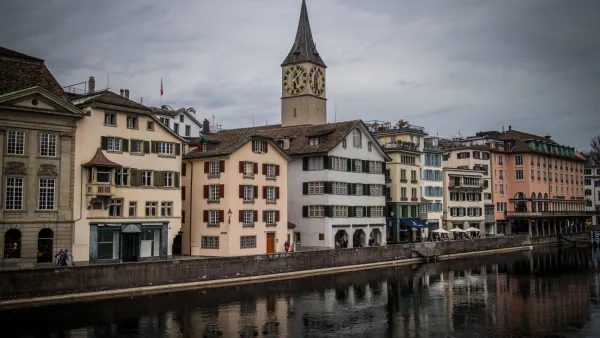Add a list of the "Top 100 Best Places to Live" to the seemingly endless series of rankings seeking to quantify what's best and worst about our cities and states. Though the inputs have changed over the last 80 years, our desire to rank hasn't.
With the help of Matt Carmichael, editor of the website Livability.com (the producer of the Best Places to Live list), Emily Badger goes back to a three-part series on "THE WORST AMERICAN STATE" by H.L. Mencken that ran in The American Mercury in 1931 to trace our fascination with ranking places.
"Over time, 'quality of life' – or, more often today, 'livability' – has come to mean many things, some of them contradictory, others just outdated," she observes. "One theme that remains constant dating back to Mencken's time is that even as the criteria have changed, our search to quantify the unquantifiable has not."
"Listicles and rankings since 1931 have benefited from ever-more data, and now an ever-more insatiable appetite to rank everything," she continues. "Rankings themselves have proliferated – creating an endless list of lists to which Carmichael is conscious that he's adding yet one more entry."
Oh, and in case you're interested (of course you are), Palo Alto came in first in Carmichael's Top 100 Best Places to Live rankings.
FULL STORY: The Neverending Evolution of 'Quality of Life' Rankings

National Parks Layoffs Will Cause Communities to Lose Billions
Thousands of essential park workers were laid off this week, just before the busy spring break season.

Retro-silient?: America’s First “Eco-burb,” The Woodlands Turns 50
A master-planned community north of Houston offers lessons on green infrastructure and resilient design, but falls short of its founder’s lofty affordability and walkability goals.

Delivering for America Plan Will Downgrade Mail Service in at Least 49.5 Percent of Zip Codes
Republican and Democrat lawmakers criticize the plan for its disproportionate negative impact on rural communities.

Test News Post 1
This is a summary

Test News Headline 46
Test for the image on the front page.

Balancing Bombs and Butterflies: How the National Guard Protects a Rare Species
The National Guard at Fort Indiantown Gap uses GIS technology and land management strategies to balance military training with conservation efforts, ensuring the survival of the rare eastern regal fritillary butterfly.
Urban Design for Planners 1: Software Tools
This six-course series explores essential urban design concepts using open source software and equips planners with the tools they need to participate fully in the urban design process.
Planning for Universal Design
Learn the tools for implementing Universal Design in planning regulations.
EMC Planning Group, Inc.
Planetizen
Planetizen
Mpact (formerly Rail~Volution)
Great Falls Development Authority, Inc.
HUDs Office of Policy Development and Research
NYU Wagner Graduate School of Public Service





























